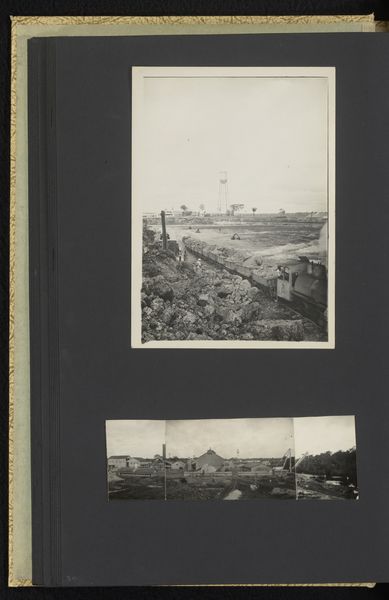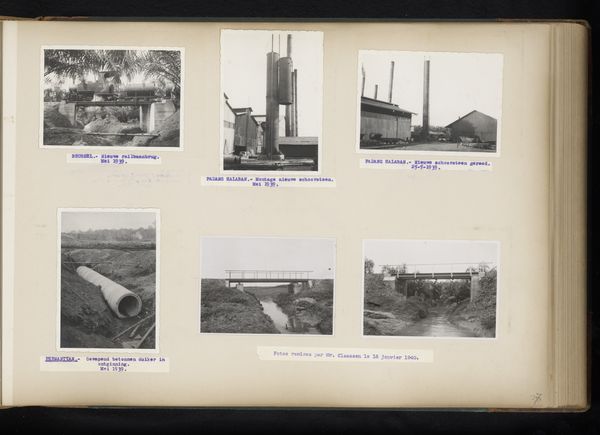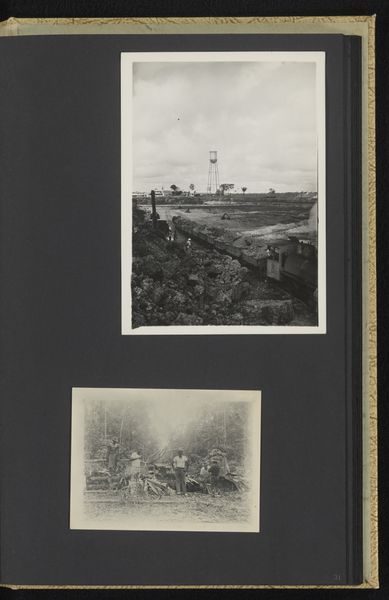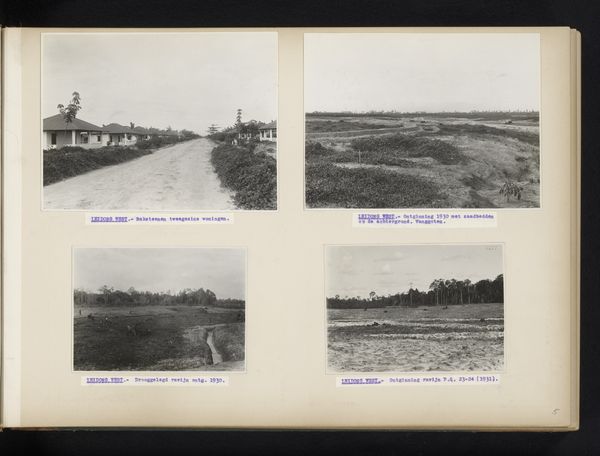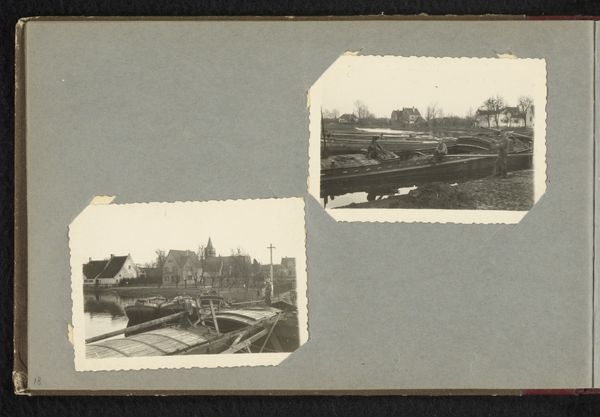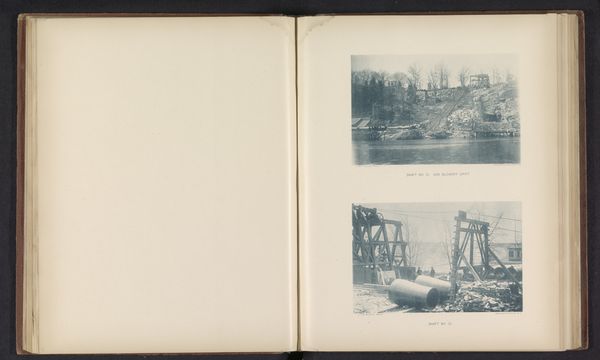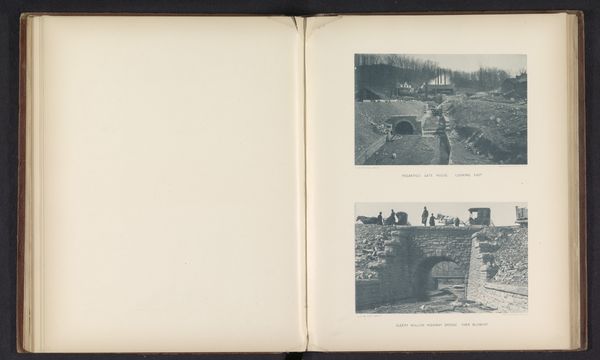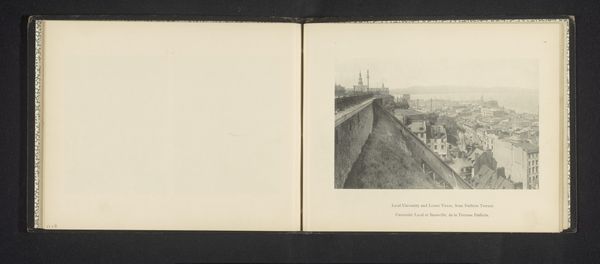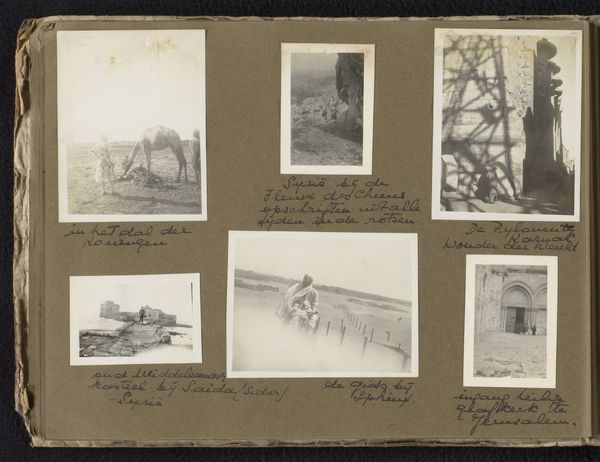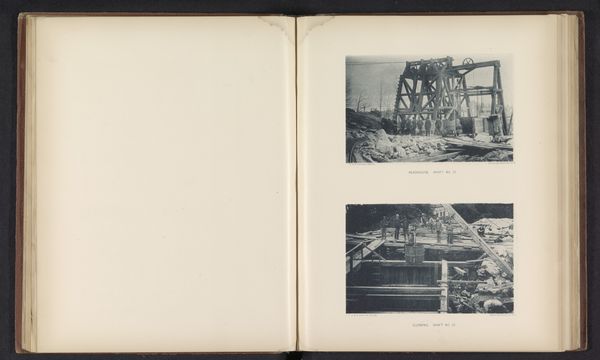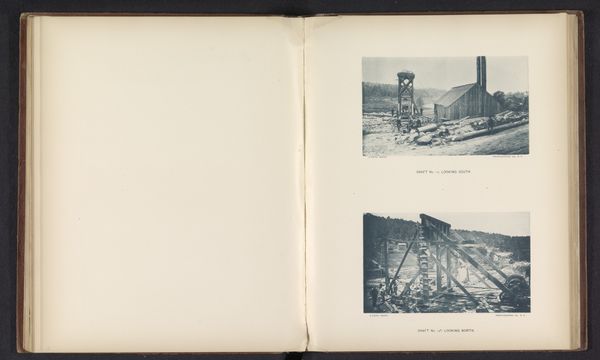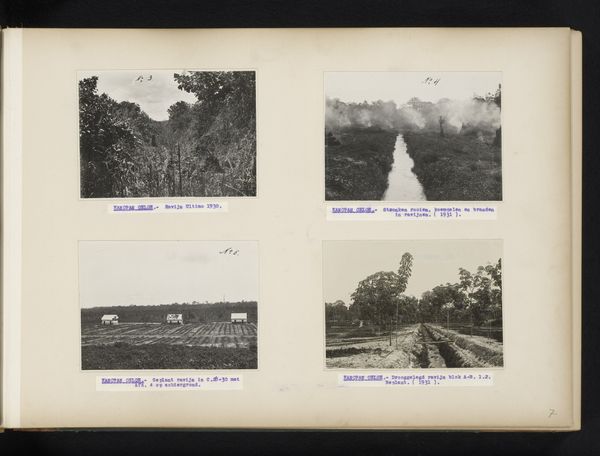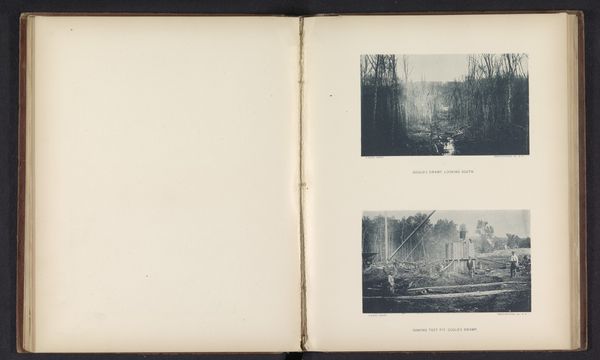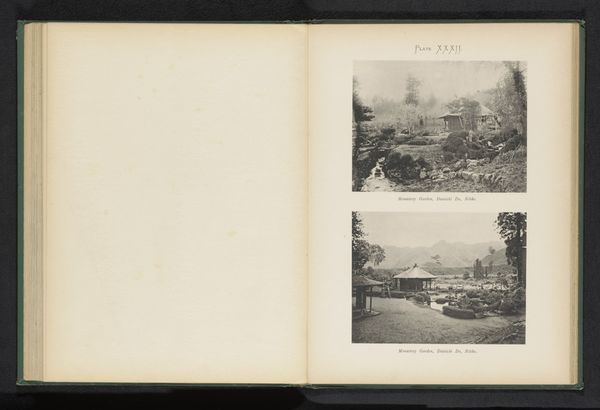
print, photography
# print
#
landscape
#
photography
#
cityscape
#
realism
Dimensions: height 80 mm, width 110 mm, height 250 mm, width 320 mm
Copyright: Rijks Museum: Open Domain
Curator: Welcome. Here we see a collection of photographs dating from 1931 to 1937, collectively titled "Brug", which translates to "Bridge." The artist remains anonymous, and these gelatin silver prints are part of the Rijksmuseum's collection. Editor: Initially, the composition strikes me. It’s the structured arrangement of four photographs on what seems like an aged album page that arrests the gaze before you even begin looking at each of the four photographs individually. Curator: I’m drawn to what the bridge itself represents culturally. It symbolizes connection, transition—both literally and metaphorically—across geographical or perhaps even societal divides. Look at the handwritten captions on each image as clues; these suspension bridges might suggest a moment of development or possibly Western intervention. Editor: Yes, bridges, by their design, are intended as links, which bring to my attention the parallel lines of the structure within each photo—how they converge. Also, I'm wondering what’s achieved by presenting these diverse views together on one page, especially since there seems to be a somewhat intentional symmetry among the bridges selected. Curator: Notice how each bridge appears almost diminutive within its setting? There's a relationship here between man-made structure and the broader landscape that makes the human intervention appear…fragile, almost fleeting, set against the persistence of the land itself. It almost presents humanity as an impermanent imposition. Editor: Exactly! And the photographic realism is what truly brings the concept home. It resists romanticizing bridges in a modernist idiom, but gives the impression that all elements are in a continuous negotiation, the man-made structures almost humbled by nature’s enduring scope. It highlights how geometric forms are interacting with organic nature. Curator: Considering it was captured during a time of significant colonial influence in that part of the world, the image also speaks to human ambition and engineering innovation. "Brug," I find it very poignant now, understanding what a precarious juncture this era represented. Editor: For me, it is less about what they intended and more about their visual presence. In terms of pure form, I am still absorbed in the tension between the rigid structures and natural environment. This work has really reminded me to seek a visual tension to fully realize our sense of seeing.
Comments
No comments
Be the first to comment and join the conversation on the ultimate creative platform.
